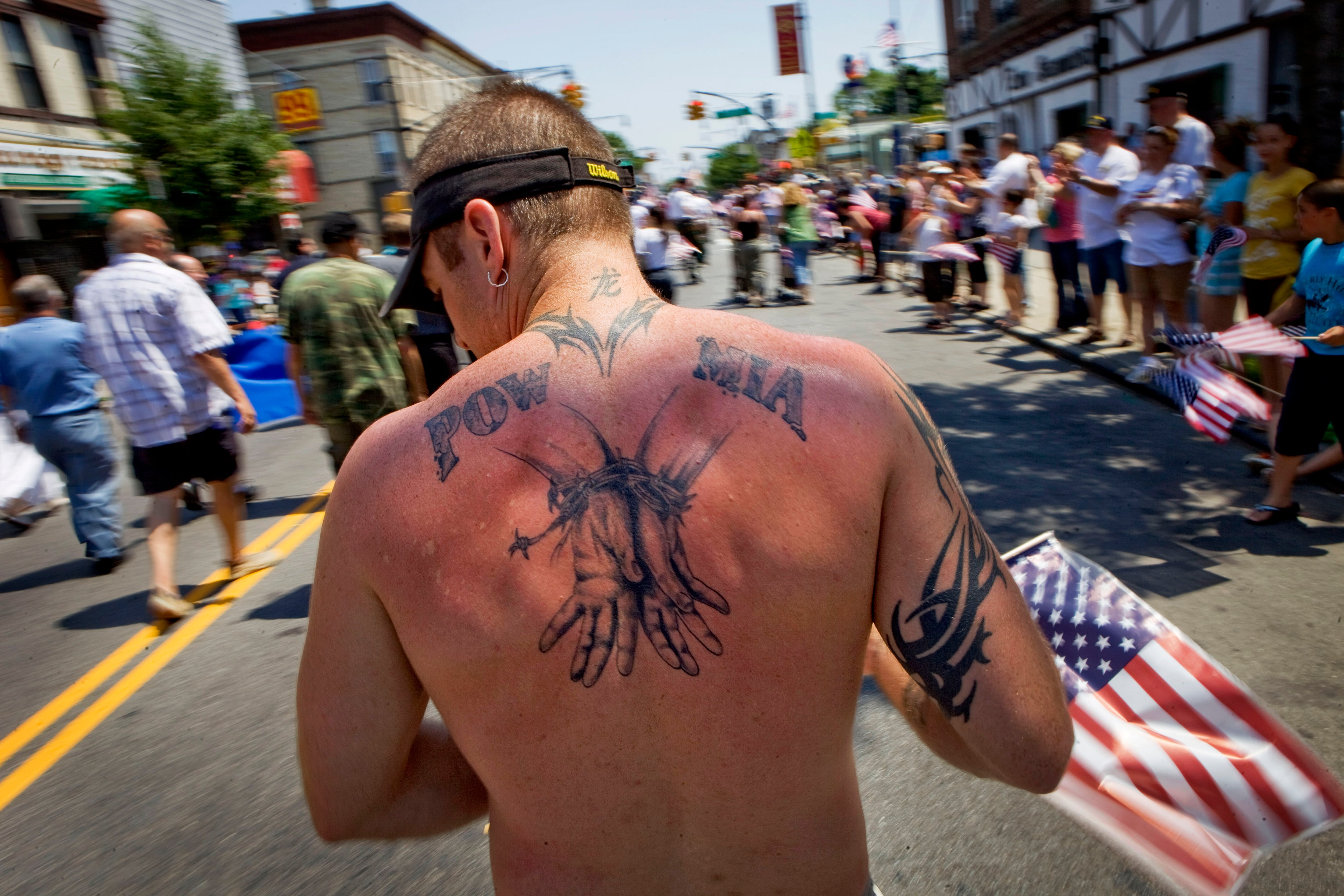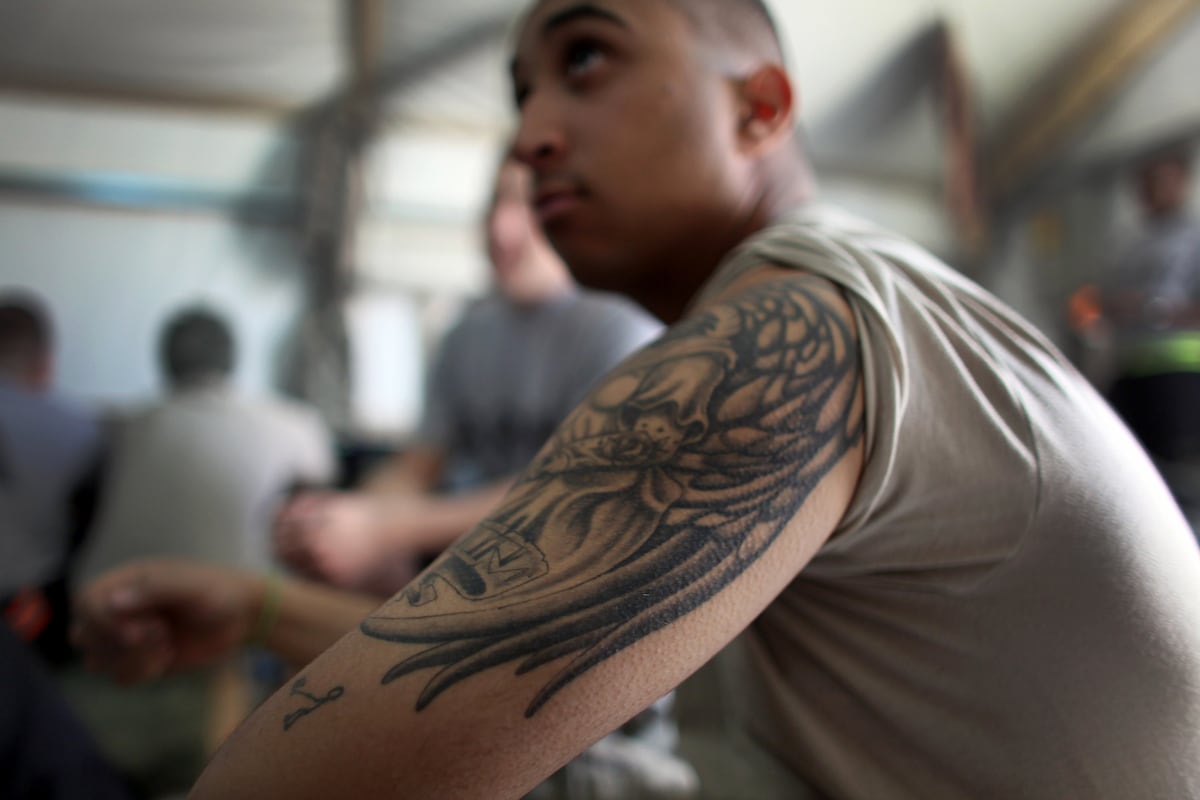They say your body is a temple. In the military, that temple is often covered in eagles, unit insignia and enough skulls to make a biker gang blush.
For generations, tattoos have served as both a rite of passage and a record of service for members of the military. From the crisp anchors and hula girls of the World War II era, to the modern proliferation of Punisher skulls, sleeve tattoos and kinetic imagery, military ink tells a story — sometimes literal, sometimes regrettable, but always worth telling.
The roots of military ink
The connection between the military and tattoos stretches back hundreds of years. British and American sailors of the 18th and 19th centuries often got tattoos as souvenirs from far-flung ports or as superstitious protection at sea. However, it wasn’t until WWII that tattoos became closely associated with military identity in the U.S.
Norman Collins — better known as “Sailor Jerry” — tattooed thousands of service members in his Honolulu shop during WWII. His flash art, characterized by bold lines and themes like pin-up girls, eagles, snakes and banners reading “Death Before Dishonor,” became emblematic of the era’s American military tattoo culture. Collins’ work still influences artists today and is commercially preserved through Sailor Jerry’s rum brand and licensed tattoo designs.
As Inked Magazine notes in its history of Sailor Jerry, “His clients were young servicemen, mostly Navy, on their way to or from battle, often getting tattoos to commemorate their experience or as symbols of bravery, loyalty, and patriotism.”
Vietnam: grim symbols for grim times
While WWII tattoos often reflected optimism or pride, the Vietnam War era saw the tone of military tattoos grow darker, just like the national sentiment around the war itself.
Grim reapers, skulls, snakes and phrases like “Kill or Be Killed” or “Born to Kill” began appearing more frequently on the biceps of American troops.
Many of these tattoos weren’t done in shops, either. The term “barracks tattoo” became a euphemism for the shaky, stick-and-poke style tattoos performed by a buddy with a needle, some thread and a questionable understanding of hygiene.
By the 1970s and 1980s, tattooing in the military was both a mark of pride and a symbol of rebellion. Despite tightening regulations in the 1980s and ’90s, including bans on certain visible tattoos, troops still found ways to commemorate their service — or at least that one wild night in Thailand.
The Global War on Terror and the age of the Punisher skull
After 9/11, the military saw a dramatic spike in tattoo culture. For many post-9/11 veterans, ink became both a cathartic outlet and a way to memorialize fallen comrades. Dog tags, battlefield crosses, KIA dates and American flags — often inked across the chest, ribs, or forearms — became some of the most common images.

One symbol rose to near mythic prominence during this period: the Punisher skull.
Originally a comic book antihero created by Marvel in 1974, the Punisher’s white skull logo was adopted by many military units during deployments to Iraq and Afghanistan. Special operations units were particularly fond of it, using it as a symbol of aggression and dominance.
The skull’s popularity eventually spread to conventional forces and law enforcement — and not without controversy. Even the character’s co-creator, Gerry Conway, has criticized its use. In a 2019 interview with SYFY Wire, Conway said: “The Punisher is a vigilante who shouldn’t be held up as a role model. Using his symbol as a military emblem or a police symbol is completely antithetical to the character’s purpose.”
The military never officially sanctioned its use, but that didn’t stop it from being emblazoned on patches, rifle magazines, vehicles and, of course, bodies.
Unit pride, identity and grief
Modern military tattoos often reflect a sense of camaraderie and a tight-knit group identity. From regimental crests to MOS-specific logos like crossed rifles, parachute wings or EOD badges, ink has become a permanent way to showcase pride in one’s role.
The popularity of full sleeves and intricate designs has also grown, especially after the Army relaxed tattoo regulations in 2022, allowing for more visible ink on hands, necks and behind the ears.
Another common trend: tribute tattoos. After-action memorials often appear in ink, honoring fallen teammates with boot prints, call signs or symbolic imagery. These tattoos act as living memorials, carried forever on the body.

As retired Marine Joey Jones — a double amputee and Fox News contributor — once said about his own tattoos, “It’s about identity. It’s a personal history I wear on my skin.”
From taboo to tradition
It wasn’t long ago that tattoos could disqualify someone from joining the military. But now, they’re so ubiquitous that even generals sport them, albeit carefully hidden. The Navy, which once banned visible tattoos above the collar, now permits neck tattoos and full sleeves, as long as they don’t contain offensive content.
Tattoo parlors have popped up near every major base, and entire deployments have been marked with group tattoos — a modern-day version of a class ring or a battle streamer.
While tastes have evolved (we’ve moved past barbed wire and tribal suns, mostly), the desire remains the same: to mark a moment, remember a comrade or show the world you were there.
Because in the military, you earn your scars. Sometimes on the battlefield. Sometimes in the tattoo chair.
Observation Post is the Military Times one-stop shop for all things off-duty. Stories may reflect author observations.
Read the full article here





